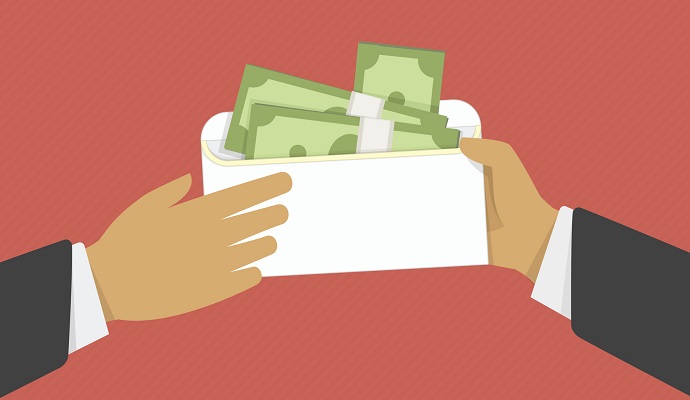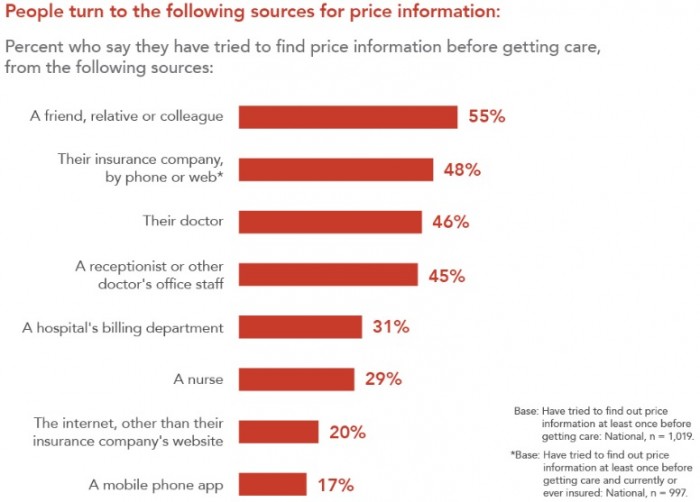28% of Adults Say Docs Discuss Patient Financial Responsibility
Even though about one-half of adults search for healthcare prices, only about 28 percent of adults said providers discussed patient financial responsibility, a survey revealed.

Source: Thinkstock
- Patients are still trying to figure out and compare healthcare prices, a recent Public Agenda survey showed. Yet only about 28 percent of the over 2,000 adults Americans surveyed said that their provider or their staff have discussed patient financial responsibility and prices with them.
With research support from the Robert Wood Johnson Foundation and the New York State Health Foundation, Public Agenda reported that one-half of adults in 2016 have tried to calculate how much they would have to pay out-of-pocket, not including co-pays and insurance reimbursements.
The number of patients attempting to acquire healthcare prices is down from 56 percent of adults in Public Agenda’s 2015 survey.
Similarly, the percentage of consumers comparing healthcare prices across multiple providers has not changed much since last year. In 2016, 20 percent of respondents stated that they have tried to compare provider prices before receiving care compared to 21 percent in 2015’s survey.

Source: Public Agenda
While many consumers continue to search for and compare healthcare prices, many are facing substantial roadblocks to finding out their patient financial responsibility. About 63 percent said that there is not enough information about how much healthcare services costs.

Source: Public Agenda
READ MORE: Key Ways to Boost Collection of Patient Financial Responsibility
The survey also revealed that consumers have limited knowledge about healthcare price variation and on how to find price information. Roughly 56 percent of adult consumers reported that they were not aware that provider prices are different and another 54 percent said the same about hospital prices.
Out of the individuals who have not previously tried to find out healthcare prices prior to care delivery, a little over one-half (51 percent) said they were uncertain how to go about acquiring price information. This figure is close to the 2015 survey’s results in which 50 percent of those who have not attempted to find healthcare price information were not sure how to do so.
With some consumers facing challenges with patient financial responsibility calculations, many are turning to their providers for answers. Approximately 77 percent of participants reported that they would trust their provider either a great deal or some when it comes to getting healthcare price information.
In contrast, only 51 percent said they would trust their employers a great deal or some with getting the most accurate information.
As a result, practice receptionists and providers are some of the top resources Americans turn to find healthcare price and patient financial responsibility information. Forty-six percent of respondents said they have tried to find price information from their providers, whereas 45 percent asked practice receptionists or other office staff.
READ MORE: Price Transparency Still Missing from Hospital Revenue Cycle
Another 31 percent reported going to a hospital’s billing department and a nurse with 29 percent of respondents.

Source: Public Agenda
The most popular source for price information were friends, relatives, and colleagues with 55 percent of participants using them, followed by insurance companies, either by phone or the web, with 48 percent.
Consumers may perceive providers as being more honest about patient financial responsibility because they do not think providers are in healthcare for the money. Only 27 percent stated that doctors are mostly interested in making money and 38 percent said the same about hospitals.
But 68 percent said that their insurance companies are primarily driven by profits.
As a result, about 70 percent of respondents felt that it was a good idea for providers and their staff to discuss healthcare prices and patient financial responsibility with consumers before ordering or doing services and prior to specialist referrals.
READ MORE: What Is Healthcare Revenue Cycle Management?
Although 80 percent also said that state governments should provide consumers with comparative healthcare price information.
Despite most Americans viewing state governments as important actors in improving healthcare price transparency, very few who resided in states with state-run price information websites used the online resource for information. Only 17 percent of adults knew about their state’s healthcare price website.
While consumers feel providers are one of the best sources for pricing information, providers should also consider offering more patient financial responsibility services to attract and retain patients.
Of the respondents who have tried to compare healthcare prices, 59 percent reported that they chose less expensive care. Even 40 percent of those who have not attempted to find price information said they would probably go to providers with more affordable prices if they knew about price before the point-of-service.
Most consumers also noted that high healthcare prices do not necessarily mean greater care quality. Approximately 70 percent of respondents stated that high prices are not a sign of better quality.
To help providers incorporate more healthcare price and patient financial responsibility services for their patients, researchers suggested that providers, such as nurses and receptionists, take the lead.
“Doctors and their staffs emerged as trusted sources of price information for many Americans in this research, and many people favor doctors and their staffs talking to patients about price,” the survey stated. “These professionals may not need to be able to tell people exactly what certain medical services will cost them, but they could discuss costs and coverage more generally and guide people toward more specific price information, if necessary.”
